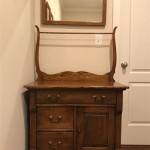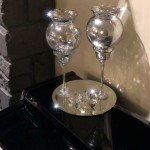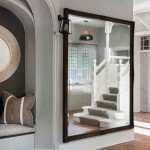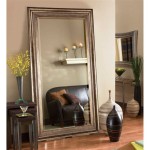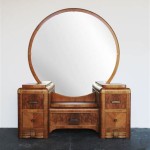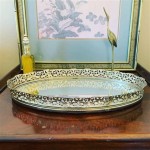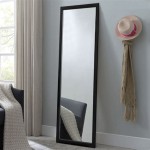How To Hang a Mirror on Drywall with Glue
Hanging a mirror securely on drywall presents a unique set of challenges. While traditional methods like nails and screws offer a reliable solution, they create holes in the wall, which may not be desirable for all situations. Adhesive offers an alternative, damage-free method for hanging mirrors, especially lighter ones. This article will explore the process of safely and effectively hanging a mirror on drywall using adhesive.
Key Considerations Before Starting
Before embarking on the project, several factors must be carefully considered to ensure successful and secure mirror installation.
These factors include:
- Mirror Weight: Adhesive solutions are ideal for lighter mirrors. Heavier mirrors may exceed the weight capacity of the adhesive, posing a safety risk.
- Wall Surface: Ensure the drywall is clean, dry, and free of dust or debris. Painted surfaces are generally suitable, but textured or wallpapered walls may present adhesion challenges.
- Mirror Backing: The material of the mirror backing can impact adhesion. Smooth, non-porous backings are ideal for adhesive application.
- Ambient Temperature and Humidity: Adhesives perform optimally within specific temperature and humidity ranges, as stated by the manufacturer's instructions. Extremes can affect curing time and bond strength.
Choosing the Right Adhesive
Selecting the appropriate adhesive is crucial for a successful installation. Different adhesives are formulated for specific purposes and weight capacities.
Consider these points when selecting an adhesive:
- Weight Capacity: Choose an adhesive with a weight capacity that comfortably exceeds the weight of the mirror.
- Application Method: Some adhesives are applied in dots or lines, while others require full surface coverage. Choose a method suitable for the mirror size and backing.
- Curing Time: Curing time refers to the duration required for the adhesive to reach full strength. Factor curing time into the project timeline.
Preparing the Drywall Surface
Proper surface preparation is essential for maximizing adhesion and ensuring a secure bond.
Follow these steps to prepare the drywall:
- Cleaning: Thoroughly clean the wall surface with a mild detergent and water. Allow the surface to dry completely.
- Degreasing: If necessary, use a degreasing agent like isopropyl alcohol to remove any residual oils or contaminants.
- Smoothing: For uneven surfaces, light sanding may be required to create a smoother surface for better adhesion.
Applying the Adhesive
Accurate and consistent adhesive application is vital for evenly distributing the weight of the mirror and ensuring a strong bond.
Adhere to these application guidelines:
- Follow Manufacturer's Instructions: Carefully read and follow the manufacturer's instructions for adhesive application. These instructions will provide specific guidance based on the adhesive type.
- Even Distribution: Ensure even distribution of the adhesive, whether applying in dots, lines, or a full coverage method.
- Quantity: Use the recommended amount of adhesive. Too little may result in insufficient bonding, while too much can create a mess.
Mounting the Mirror
Mounting the mirror requires precision and patience to ensure proper placement and secure adhesion.
Consider these steps for mounting:
- Positioning: Carefully position the mirror on the wall, ensuring it is level and aligned as desired.
- Applying Pressure: Apply firm and even pressure to the mirror surface, pressing it against the adhesive for the duration recommended by the manufacturer.
- Supporting the Mirror: For larger or heavier mirrors, temporary supports may be necessary during the curing process to prevent slippage.
Post-Installation Considerations
After mounting the mirror, certain steps can further enhance the security and longevity of the installation.
These steps include:
- Curing Time: Allow the adhesive to cure completely before removing any temporary supports or placing objects on shelves attached to the mirror.
- Inspection: Regularly inspect the mirror and adhesive for any signs of weakening or detachment. Address any issues promptly to prevent damage or accidents.
- Cleaning: Clean the mirror surface with appropriate glass cleaner, avoiding contact with the adhesive.
By following these steps and exercising careful consideration, individuals can successfully hang mirrors on drywall using adhesive, achieving a secure and aesthetically pleasing result without the need for traditional fasteners.
How To Hang A 100 Pound Mirror On Drywall Quora

How To Hang A Wall Of Mirrors The Handyman

How To Hang A Mirror On Wall Without Nails

How To Hang A Mirror On Wall Without Nails Guide For All Diyers

How To Install A Mirror Using Adhesive Gluing Vanity

Mounting A Mirror With Glue

Mounting A Mirror On Drywall Top 8 Ways For Savvy Handyman

How To Install A Mirror Using Adhesive Gluing Vanity

How To Hang A Mirror With No Slip Adhesive

How To Hang A Frameless Mirror On The Wall With Pictures

